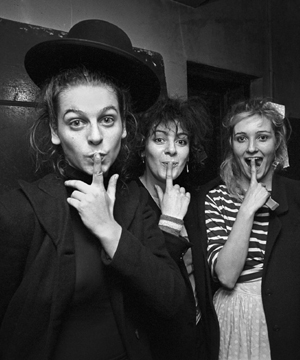
October 20, 2021
Michael Grecco, US Punk and Post Punk Photographer – Interview - Punk-Rocker
MG: I grew up in New York at a time when radio in general was really bad. I was one of the executive producers on a documentary film we did here on the FX Network called Punk – in researching that I discovered that record companies realised that selling records was more profitable than sporting event tickets, theatre tickets and live theatre – all of entertainment combined in ticket sales didn’t add up to what selling LPs got. So, they went into high gear after the ‘60s and started producing things that were sellable and that became music that I didn’t want to listen to, and I don’t know anyone else who wanted to listen to it – and that’s how you got all these bands like Styx, Journey and Kansas, with built-in hooks and polished musicianship.
I was turned off by it, as a kid I was living in New York and was a music snob. I was heavily into Velvet Underground, loved Bowie, hadn’t really spent a lot of time listening to Iggy Pop yet – I got more exposed to him when I moved to Boston – but liked Roxy Music for the Eno production and its cleverness. So, I had a couple of rock bands that I loved but I was mainly a jazz listener. I would go to clubs and listen to Keith Jarrett, Charlie Mingus, Thelonious Monk, Chick Corea and Stanley Clarke and I judged music that way, on its creativity. If you were a boring improviser and you went in circles, I didn’t value what you had to say as a musician.
So, in that group and looking at music that way I also listened to Duane Allman, Eric Clapton, and Hendrix of course, because they were clever, interesting and they had something to say as an improviser. I’d listen to all of this based on musicianship because my frame of reference was jazz.
Before I left for college, I was at my buddy Adam’s house and he put on The Ramones album, and we were saying “What the hell is this, who would put out an album that says Beat On The Brat? This stuff is cool.” That was my first exposure to what was out there, but I had never seen it live, never seen it performed.

